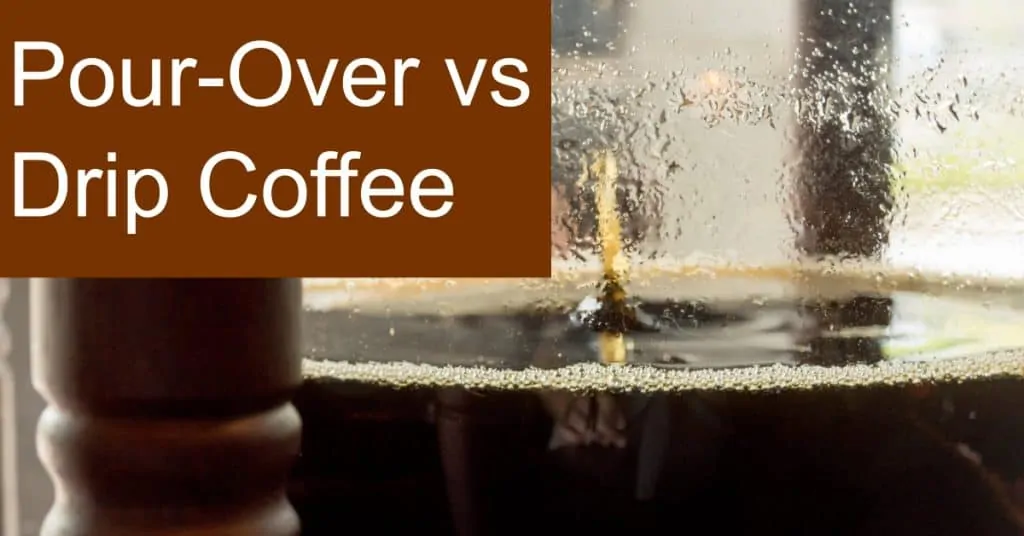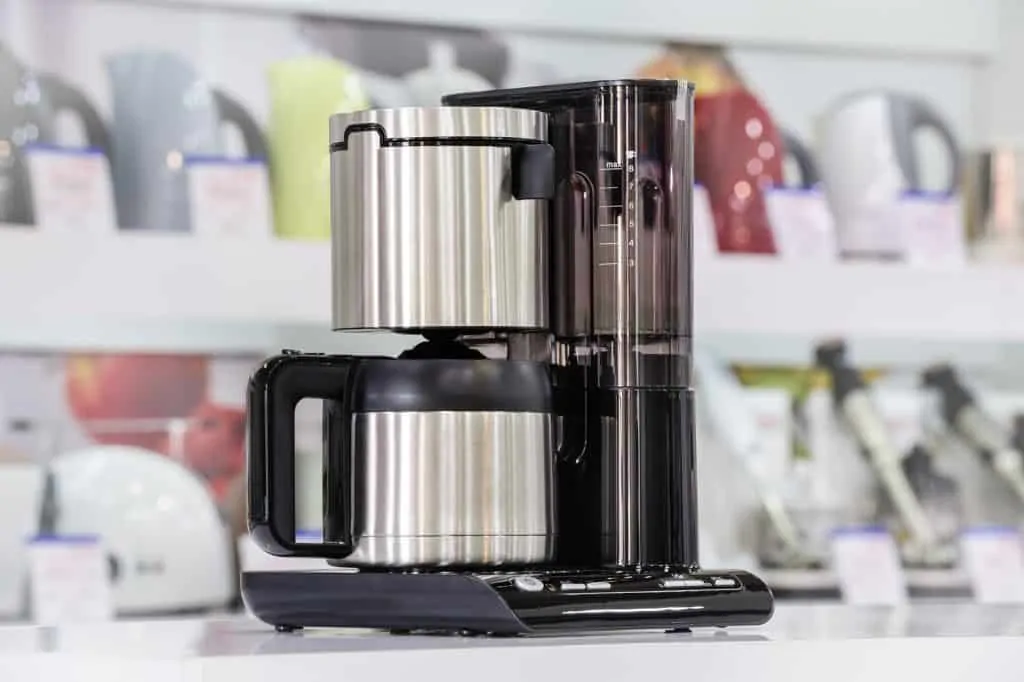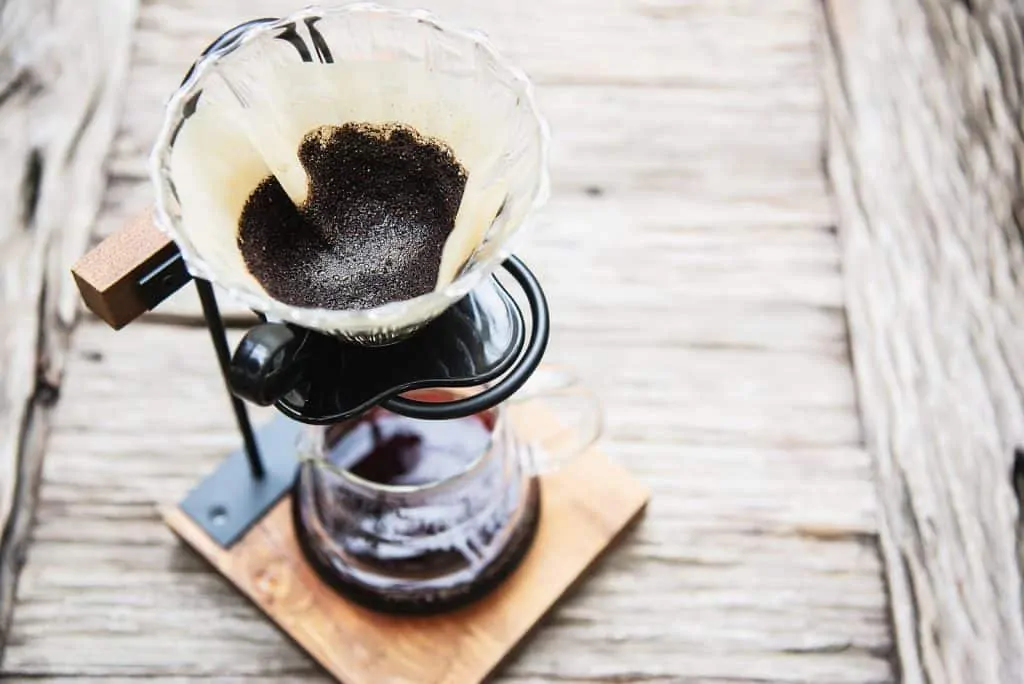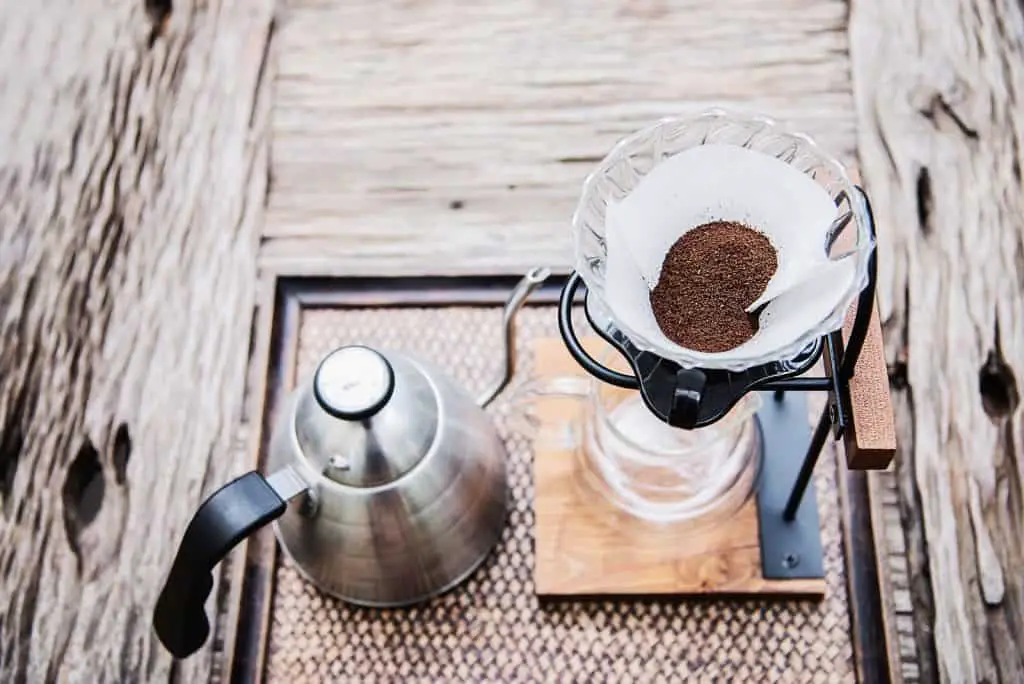When you’re out searching for the perfect coffee maker, you might be surprised to find out how many types there are available. Regardless of the size of your kitchen or how strong you like your coffee, you can always find the perfect coffee maker if you know what you’re looking for.
The two main types of coffee pots are the pour-over coffee pot and the drip coffee pot. Each has its own advantages and disadvantages. Fortunately, each of these types of coffee is rich and delicious.

If you’re still deciding which type of coffee maker you want and you’re uncertain which one is best for you, keep reading because below is detailed information about both of these types of coffee that could help you make your decision.
What Is Drip Coffee? How Is it Made?
For more than 30 years, the companies that make drip coffee pots have honed their skills and perfected this type of coffee machine, so it isn’t a surprise that they’ve become better machines that are also much easier to use.
To understand how this type of coffee machine works, you have to first become familiar with its different parts, and they are described below – How do percolator vs coffee maker compare?
Reservoir
This is a fancy name for the part of the machine that holds the water that you pour into the pot when you start making your coffee. At the bottom of the reservoir bucket is a hole with a white tube, which leads from the reservoir base to the drip area. This white tube carries hot water to the drip area of the coffee pot. It also allows you to use a variety of cleaning solutions whenever you decide to give your coffee machine a good cleaning.
Showerhead
Again, a funny name since it’s not exactly part of a shower, but this is what receives the hot water that comes from the white tube. When that hot water hits the showerhead, it is sprayed onto the coffee grounds – Is it possible to reuse coffee grounds?
Drip Area
This is an area that not all drip coffee makers have. Nevertheless, the drip area has a perforated plastic disc, and when water flows from the white tube, it lands on the drip area then goes through the holes and then to the coffee grounds.
Heating Element
The heating element is on the side of the machine’s base. It has an aluminum extrusion with two sections: a tube that allows the water to go through it, and a resistive heating element, and the water is heated through both of these parts. The heating element does two main things: it heats up whenever you pour water into the coffee maker, and it keeps the coffee warm after it’s brewed.
Switch
The on/off switch does more than just make your coffee. It keeps the heating element from overheating thanks to the fuses and sensors inside, in part because it turns the sensors on and off so that the coffee doesn’t get too hot or too cool. The sensors also turn off completely when very-high temperatures are detected, which is a good protective and safety device.
With a drip coffee maker you pour the coffee grounds at the top of the machine in the basket where the filter goes fill up the water reservoir and place the glass carafe at the bottom on the heating plate
Then, you press the “on” switch and the coffee pot starts working. It seriously could not be any easier for you.

How Is Pour-Over Coffee Made? How Did it Get Invented?
Sometimes referred to as manual coffee-making, these coffee pots are quite different from the drip kind. With the pour over type of coffee pot, there are two parts involved. The first is a glass carafe that goes at the bottom, and the second is a lid with a cone-shaped part to it. You will put a cone-shaped filter at the top of the coffee pot, pour coffee grounds into it, then pour boiling water on top of the grounds.
To get started, you have to boil some water, and the amount you boil will depend on the size of your carafe. Once the water is boiled and your grounds are ready to go, you put the lid on, put your filter in and then the grounds, then pour some of the boiling water into the filter. You’ll only want to cover the grounds themselves and try to avoid pouring water over the filter. Watch as the water drips down into the carafe, and when it stops doing so, you can pour more water over the grounds.
In fact, you will repeat the process of pouring boiling water over the coffee grounds until the carafe is filled up with coffee. You’ll want to let the filter set for 30 to 45 seconds in between each of the times you pour water into the filter, to make sure it comes out tasting the right way in the end.
The process usually takes a while and requires your constant attention, which is why so many people dislike this method of making coffee. It isn’t complex, but it is time-consuming for sure.
The pour-over coffee machine came on the scene first – in the early 1940s, whereas the drip coffee maker wasn’t around until the 1970s. Manual coffee makers were the norm until then, so needless to say, people welcomed the drip coffee makers and completely embraced them. Nevertheless, many people still use the pour-over machines because they feel like they have a little more control over the coffee-making process.

Is Pour Over the Same as Drip?
When it comes to the way the coffee is made, these two coffee makers could not be more different. With one, you get everything set up and then press a button.
With the other one, you are almost literally making the coffee yourself in a step-by-step process. The time involved for each coffee maker to brew some coffee ends up not being that different; after all, with both methods, you have to give the process some time. Still, it is definitely a bit more complicated to make coffee with a pour-over coffee machine.
Another difference involves the parts inside of the machine. A drip coffee maker has several different parts, which are described above, while a pour-over coffee maker has only two parts – and no electronic parts on the inside. You don’t plug in a pour-over coffee machine, and it consists of just two simple parts. It is, by all definitions, a manual coffee maker.
That being said, since you can still use the same types of coffee grounds with both types of coffee makers, you can still get a great-tasting cup when you’re done regardless of which machine you’re using. The coffee itself doesn’t change from one method to the next – unless you want it to. The only thing that’s different is the way the coffee is made.

What Kinds of Coffee Grinds Can You Use? – Fine? Coarse?
If you grind your own coffee, you have a lot more options than you think when it comes to how fine or coarse you want your coffee to be. To accommodate all types of grinds, you’ll need something more than a grinding machine with blades in it.
Instead, choose a “burr” grinder, which allows you to get the exact consistency that you prefer. If you don’t have a burr grinder, just use your grinder with blades and use the pulse feature, stopping every now and then to look at the consistency until it looks the way you want it to.
Here are the seven grind types for you to choose from:
- Extra-fine, which looks and feels like baby powder.
- Fine, which has the consistency of table salt.
- Medium-fine, which looks like powdery sand.
- Medium, with the consistency of regular sand.
- Medium-coarse, which looks like Kosher salt.
- Coarse, which is rockier and has sharp edges and bigger bean particles.
- Extra-coarse, which is rather chunky.
Some types of coffee require certain grind sizes, while for others, the grind size makes no difference. For instance, espresso, double espresso, cappuccino, café latte, mocha, and frappe all require a fine grind; Turkish coffee does best with extra-fine; and French press and cold brew coffee does better with a coarse grind.
What Type of Roast Produces Better Coffee? Dark or Light Roast?
If you want your coffee to taste a certain way, it’s good to know the difference between the four main coffee roast types. Coffee beans are roasted at different temperatures and for different amounts of time, both of which affect their caffeine level, the acidity level, and of course, the way they taste. The less time it takes to roast the coffee beans, the more acidic they are, and the higher the caffeine level because it is the roasting process itself that eliminates some of the caffeine and acidity in the beans.
Here are the four basic types of roasted coffee and some information on each:
- Light roast – These are usually roasted at temperatures of 356 to 401 degrees Fahrenheit, until right after the beans start to crack. Since they are not roasted that long, light-roasted coffee has the most caffeine in it and the highest acidity level. It also has a citrusy or lemony flavor to it because of these things, which many people love.
- Medium roast – These are roasted at temperatures of 410 to 428 degrees Fahrenheit, and they are removed right before the second crack in the beans occurs. This is what most coffee drinkers in the United States drink, and the acidity and caffeine levels in this type of roast are well-balanced and somewhere in between dark roast and light roast.
- Medium-dark roast – These are roasted until their internal temperature reaches 437 to 446 degrees Fahrenheit. They are removed during or just after the beans crack a second time. It has a rich, full flavor, and less acidity than the medium or light roasts do.
- Dark roast – These are roasted at temperatures of 464 to 482 degrees Fahrenheit and have the sweetest flavor of all of the roast types. This is because they are roasted longer than the others and therefore the beans themselves start to caramelize. Dark roast coffee has the least amount of acidity and caffeine than the other roast types.
The type you end up choosing will depend on how you want your coffee to taste in the end. The main differences in the four roast types are the acidity level and the amount of caffeine, so this is something to take into consideration before you decide which roast type is best for you.

Pour Over Coffee Basics – What you need to know about coffee pouring!
Which Is Less Expensive: Pour Over or Drip Coffee?
Because both pour-over and drip coffee machines can accommodate coffee of all types, there is no difference in the price of the coffee itself, but when it comes to the machines, the pour-over coffee machines tend to be less expensive. There are several reasons for this. First, pour-over coffee makers usually don’t have as many parts as drip coffee makers do. Even the pour-over coffee pots that are a little more advanced usually cost no more than $20 to $30. Drip coffee makers, on the other hand, can range from $25 to more than $1,000.
Drip coffee makers have a lot more internal electronic parts than pour-over coffee pots, and therefore they are going to cost more. Pour-over coffee pots are just made much simpler and with much fewer parts, so they will always be less expensive than automatic drip coffee makers.
Final Thoughts
When it comes to pour-over versus drip coffee makers, the best news is that each of these coffee makers makes an excellent cup of coffee. While the pour-over coffee pots require some attention, millions of people still love them because of the sense of control they get from the machines.
Pour-over coffee pots are also less expensive, which appeals to a lot of people. Nevertheless, with the drip coffee maker, you just fill it up and press the “on” switch, and it does all the work for you, making it much simpler in the long run.
In the end, the type of coffee pot you get will depend on a lot of different things, but now you have enough information to get started so you can find something perfect for your needs.

